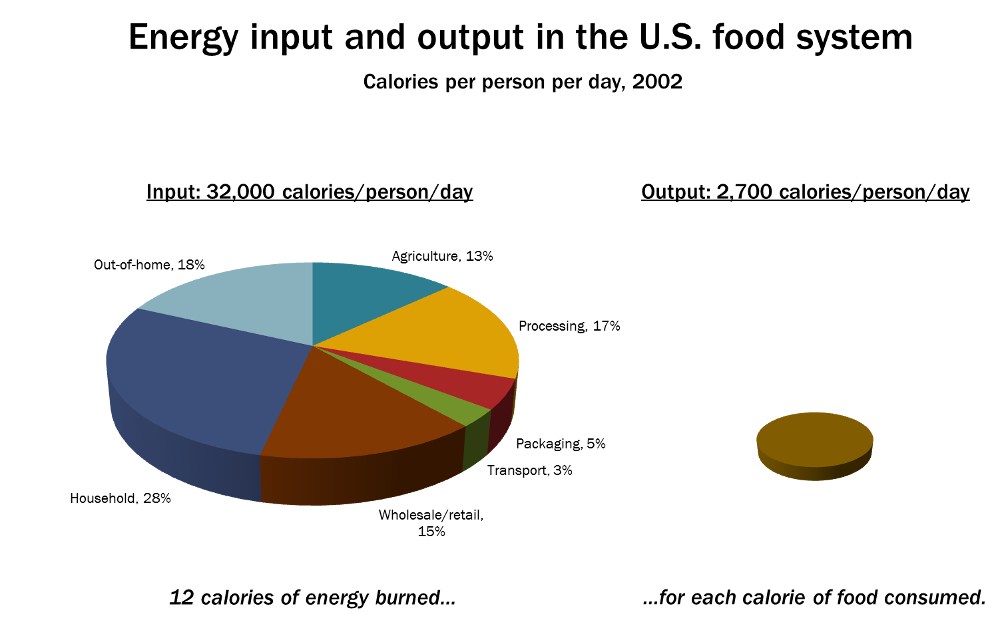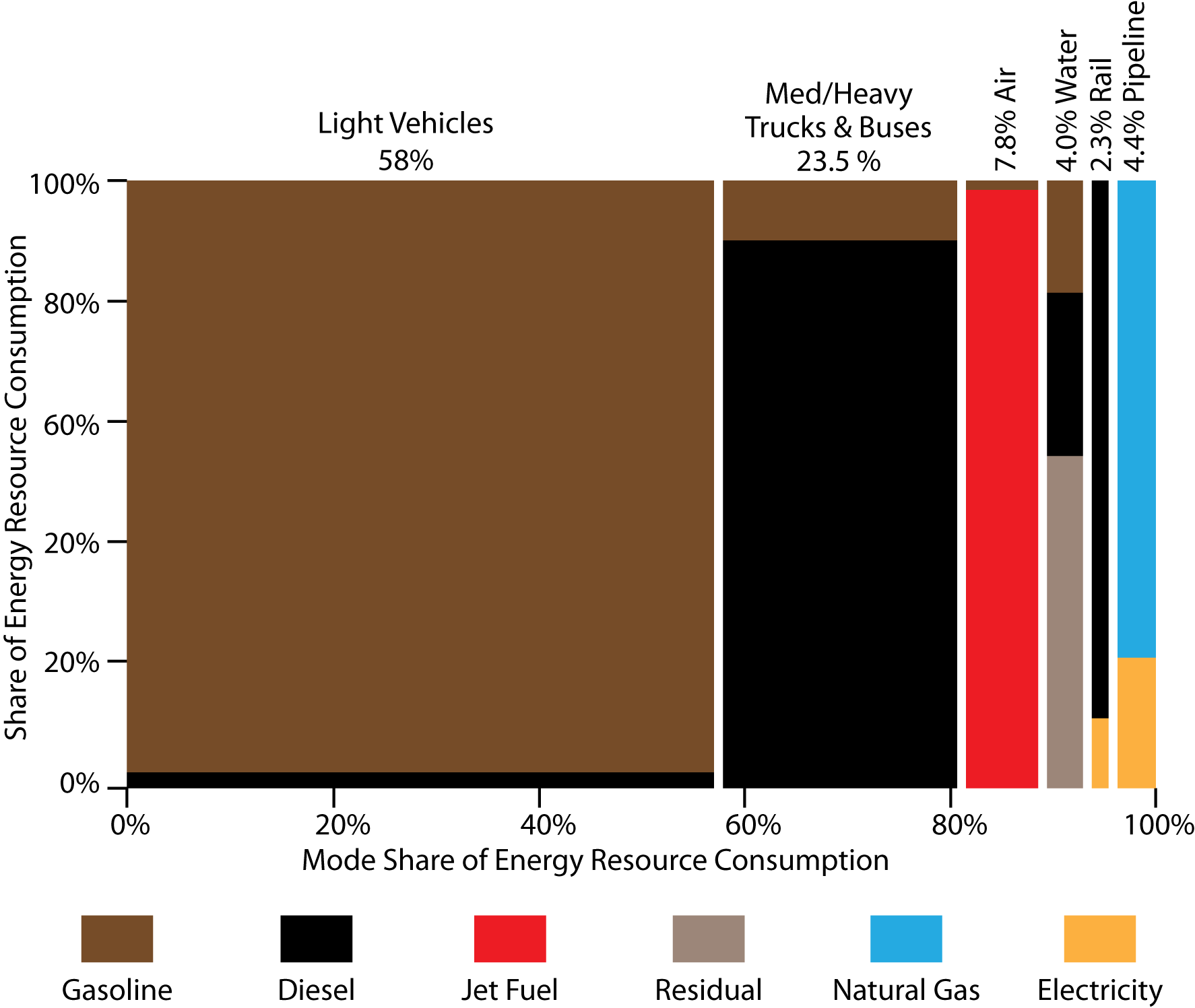Possible Energy Constraints to Further Urbanization
May 26, 2016

The following is an excerpt from a chapter by Richard Heinberg which is included the new book Can a City Be Sustainable? (State of the World) by The Worldwatch Institute.
The last few decades have seen dramatic urban expansion as a result of both global population growth and the influx of rural migrants to cities. Most futurists assume that this trend will continue throughout the current century, and many environmentalists welcome the prospect of urbanization because cities seem to impose lower environmental costs, per person, for a given standard of living.
How long can the trend toward urbanization continue in the face of this century’s energy and climate constraints?
Industrial civilization—the biggest energy extravaganza in human history—arose due to the historically anomalous advent of fossil fuels, with their ability to deliver dense, portable, easily storable, and cheap energy in unprecedented quantities. Fossil fuels replaced most human labor in agricultural production and also provided faster and more-efficient means of bringing distant resources to urban hubs.
But our current fossil fuel-based energy regime faces two serious challenges: depletion of the “low-hanging fruit” of global petroleum supplies, and the need to reduce carbon emissions to avert catastrophic climate change.
Efforts to replace coal and natural gas with wind and solar energy have begun in the electricity sector. However, the challenge of a full transition from fossil fuels to renewable energy sources is more daunting when it comes to petroleum. Crude oil and products derived from it account for nearly two-thirds of global transport fuels.
The two economic sectors most vulnerable to oil supply limits (imposed either by depletion or by efforts to mitigate climate change) are agriculture and transport, and both are pivotal to continued urbanization.
Although agriculture was the primary source of energy for pre-industrial societies, industrial agriculture is a net consumer of energy. The Green Revolution, which more than doubled cereal production in developing countries between the years 1961 and 1985, succeeded by vastly increasing inputs—nitrogen fertilizers, pesticides, and herbicides—all made from fossil fuels. The U.S. food system, which served as a model for the Green Revolution, consumes approximately 12 calories of energy (mostly from fossil fuels) for every food calorie delivered to the final consumer.
Energy Input and Output in the U.S. Food System, 2002
Ways to reduce fossil fuel inputs to food systems include the use of farm machinery powered by renewable electricity or farm-produced biofuels; the localization of food systems to reduce transport (perhaps entailing vertical urban agriculture); the adoption of organic and ecological production practices to reduce the need for nitrogen fertilizer, pesticides, and herbicides; and an overall reduction in the consumption of highly processed foods.
If smaller-scale organic production cannot produce high-enough yields, or if the transition is hampered by a failure to train farmers adequately or quickly enough or to undertake land reforms required, then the consequences of a significant involuntary reduction in the availability of oil to food systems would be severe. Crucially, even if small-scale organic practices did prove sufficiently productive, more agricultural labor would be needed, perhaps encouraging (or requiring) many people to move back to the countryside. It is possible to imagine methods by which this “re-ruralization” could be accomplished that are either progressive in nature (ecological farm co-ops, for instance) or regressive (a new serfdom).
Cities depend overwhelmingly on powered transport for obtaining raw materials for manufacturing (nearly all of which occurs in or near cities); for importing and exporting manufactured goods; for moving people to and from home, work, shopping, school, and cultural events; for importing food; and for exporting wastes of various kinds.
In industrialized countries, the lion’s share of oil consumption in the transport sector occurs in private automobiles. Trucking and aviation vie for second place in most countries, with rail and public transportation assuming more modest roles. However, the fuel efficiency of moving 1 kilogram of material a distance of 1 kilometer runs more or less in the reverse order.
One response to the declining availability of petroleum is to discourage low-occupancy car use and air travel while encouraging the use of walking, bicycling, and public transit for short distances and rail for medium and long distances. Making such a shift requires significant investments and changes to land-use and transportation policies, which inevitably are politically contested. But, as many cities around the world have been discovering, the results often are quite popular and beneficial.
Overall, cities may need to adapt to more-localized raw materials sourcing, manufacturing, and waste disposal.
In a world with less liquid transport fuel, it is hard to see how cities could continue growing as they have in recent decades.
Prior to the fossil-fueled Industrial Revolution, the share of the global population that lived in cities was small—less than 10 percent. Today, just over half of humanity lives in cities. At some stage, the trend toward urbanization will taper off or even reverse itself. It is impossible to know how close we are to that tipping point, but it could well occur during this century, and a decline in available energy is likely to be the key driving factor.
Analogous historic moments have been associated with the collapse of complex societies. Civilization is defined, literally, by city dwelling (civis, the Latin root of the word civilization, means “city”). Urban living historically has brought with it social stratification and full-time division of labor. As civilizations expand, they urbanize; when they fail, cities empty out and people return to subsistence agriculture or foraging. The process of collapse typically entails massive mortality.
As ancient civilizations crumbled, absent sound leadership from elites, people responded by creating new, simpler social and economic arrangements that required smaller energy investments. We can see the faint beginnings of similar trends today in the “sharing economy,” in organizations of idealistic young organic farmers, and in Transition initiatives. Although the 1970s “back-to-the-land” movement (which coincided with historic energy crises) largely fizzled, perhaps due to cheap oil flowing from the North Sea and Alaska during the 1980s and 1990s, we may be on the cusp of similar, more widespread, and possibly more desperate trends today.
BUY THE BOOK – Order your copy now using the discount code 4SOTW
From Can a City Be Sustainable? (State of the World) by The Worldwatch Institute. Copyright © 2016 Worldwatch Institute. Reproduced by permission of Island Press, Washington, DC.


